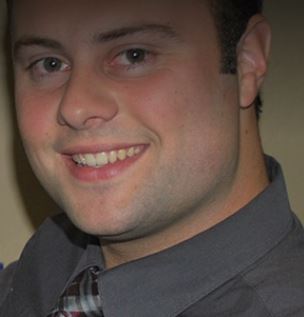“What happens after frozen shoulder manipulation?”
I am a 30 year old male. I want to know what happens after frozen shoulder manipulation?
10 Answers
ChiropractorChiropractor
Adhesive capsulitis (frozen shoulder) can often be a neurological imbalance or a nerve not communicating correctly. The nerves of the shoulder come from the neck, and the muscles that lift the shoulder above 90 degrees come from the upper part of the neck. It’s common for neck stiffness, soreness, or headaches to occur if the neck is the source of frozen shoulder symptoms. To answer your question, the neck is the most common area adjusted (manipulated) when addressing frozen shoulder. After an adjustment, you will have a slightly better range of motion to the neck and the shoulder. It is very common that you will need several adjustments to restore function to the shoulder (typically based on X-rays).
Jimmy Allgood D.C.
Jimmy Allgood D.C.
That depends on the "manipulation". Our San Francisco chiropractor adjusts the full spine, works on soft tissue and does gentle movement of the shoulder (humerus). This breaks up scar tissue and puts more blood flow to the area helping with healing and range of motion. Frozen shoulder can also be caused by stress so lifestyle advice is also given. Everyone is different so when and how frozen shoulder starts disappearing varies for each individual.
Under anesthesia, or just a chiropractor going to rack that shoulder? First, you should have (past tense) or absolutely should inquire the doctor that is recommending it as to what kind of results he had the experience of seeing, and what kind of recovery time he would expect given your history, age, and length of time with frozen shoulder. Also, I would recommend asking what causes it, and how will it be prevented in the future from exacerbation.
With that said, I would recommend under anesthesia. Only because it's painful and it's not easy to relax while someone has to do what they need to. If you can’t or muscles fight the adjustment to free the adhesion, then recovery will be longer and pain will be prolonged due to straining or tearing of muscle to restore motion and synovial joint lubrication. Either way, it will get better!
With that said, I would recommend under anesthesia. Only because it's painful and it's not easy to relax while someone has to do what they need to. If you can’t or muscles fight the adjustment to free the adhesion, then recovery will be longer and pain will be prolonged due to straining or tearing of muscle to restore motion and synovial joint lubrication. Either way, it will get better!
Frozen shoulder can be tricky. Even after deep tissue release and shoulder manipulation it usually still is very painful and frozen. Takes months of treatment to heal. There are some studies that show doing nothing has the same outcome as getting it treated by PT or a chiropractor. Very rarely it will fully resolve (unless it really wasn't frozen shoulder) after 1 manipulation.
There is usually quite a bit of soreness from breaking up the adhesions and fibrous tissue. Chronic and severe restrictions may not always get full mobility with one procedure. Immediate rehab post-procedure is extremely important to increase overall success.
Thank you for your question.
There is a capsule that surrounds the shoulder joint. In frozen shoulder that capsule tightens and restricts motion. I liken it to shrink wrap. Treatment requires a combination of therapy, stretching, exercise and chiropractic adjustment. The therapy focused on loosening the capsule and relaxing the muscles of the shoulder and upper back.. The adjustment works to realign the shoulder, clavicle, and ribs, if needed. In severe cases I will refer to an orthopedist and coordinate treatment. Home stretching and exercise reinforces the treatment provided in the office.
There is a capsule that surrounds the shoulder joint. In frozen shoulder that capsule tightens and restricts motion. I liken it to shrink wrap. Treatment requires a combination of therapy, stretching, exercise and chiropractic adjustment. The therapy focused on loosening the capsule and relaxing the muscles of the shoulder and upper back.. The adjustment works to realign the shoulder, clavicle, and ribs, if needed. In severe cases I will refer to an orthopedist and coordinate treatment. Home stretching and exercise reinforces the treatment provided in the office.
Good morning. I am not sure exactly what you mean so I will talk about a few things. If you mean MUA (manipulation under anesthesia), I don't do that so I can't speak about it. If you want to know how I treat a frozen shoulder, that's easier. If it is a more advanced case, I would recommend PT and chiropractic. If it is new or a milder case, I would adjust you with a focus on your shoulder, upper back, and neck. I would put your shoulder through passive range of motion stretches to your tolerance. This is a condition that requires participation from you, meaning you need to do exercises at home in addition to what is done for you in the office. I hope this helps and if you want more information, please reach out again. I would love the opportunity to help you. I apologize for the delayed response - I had company in town this weekend from New England.
This allows the shoulder to have more mobility and usually less pain. It is important to follow up with rehabilitation exercises and stretches.





